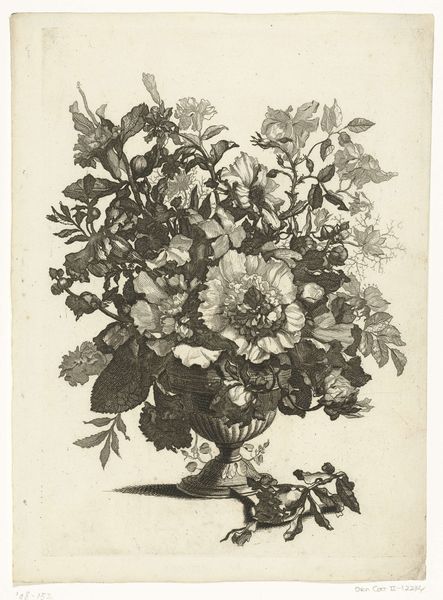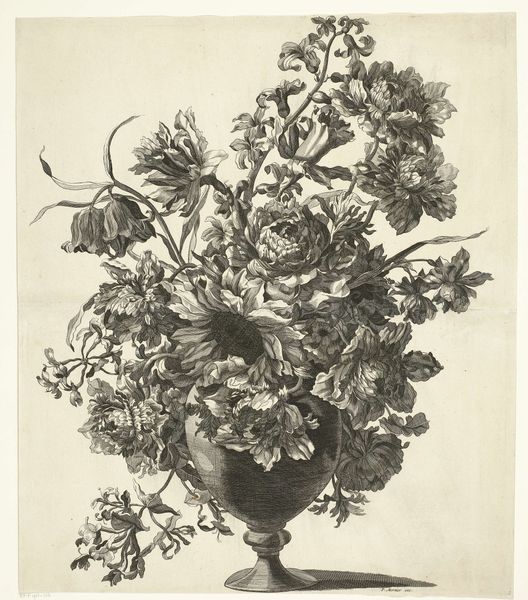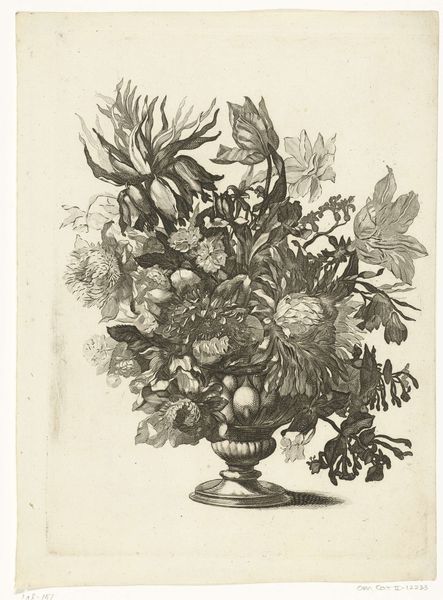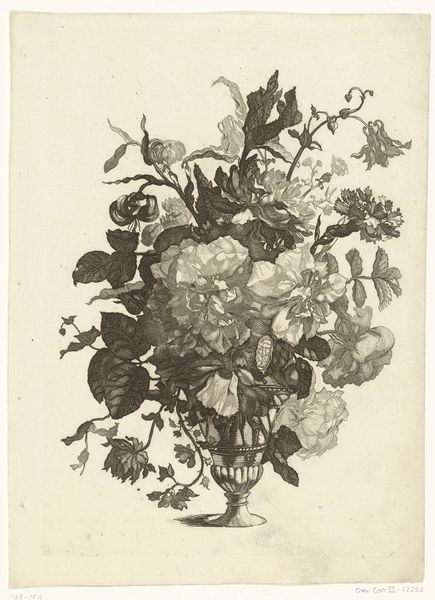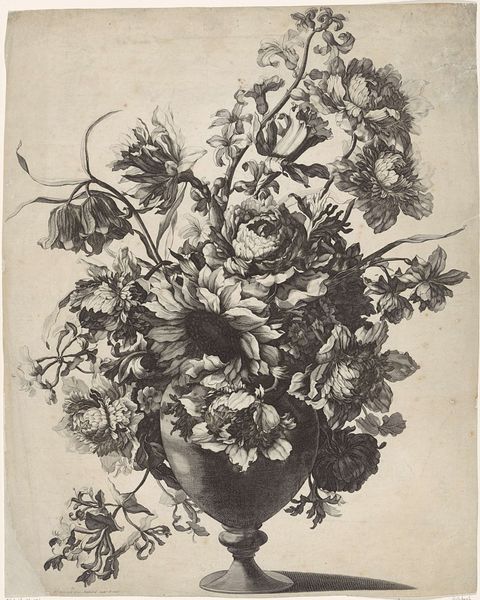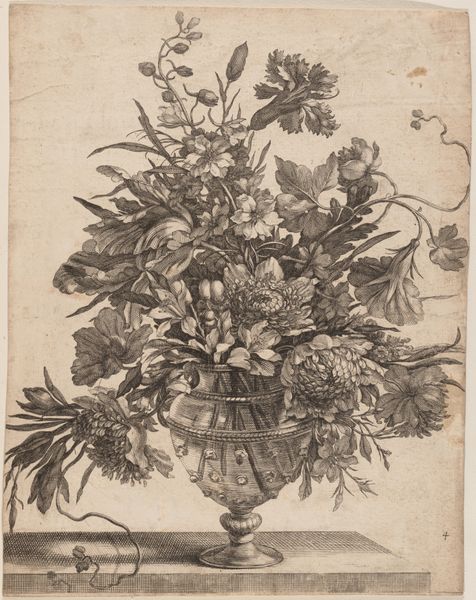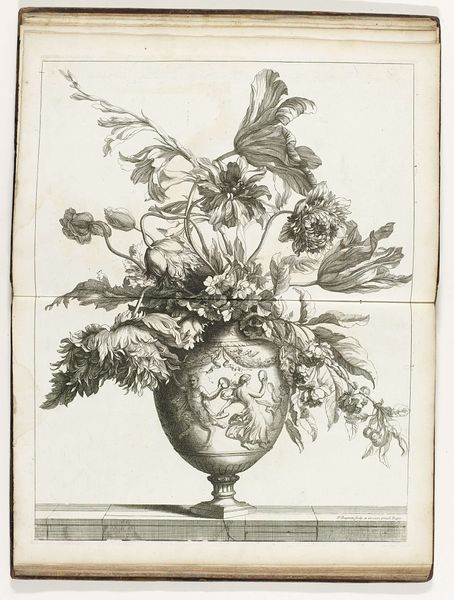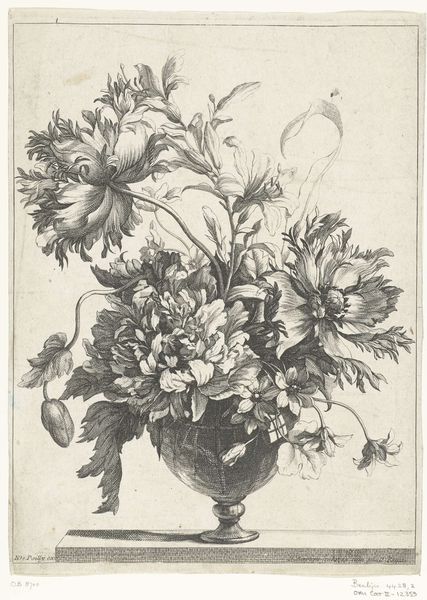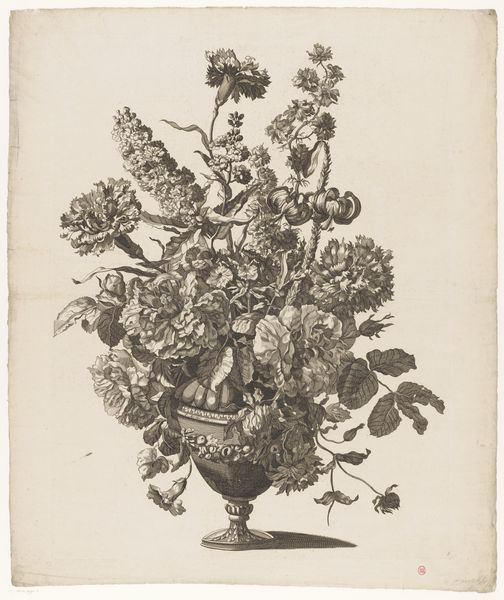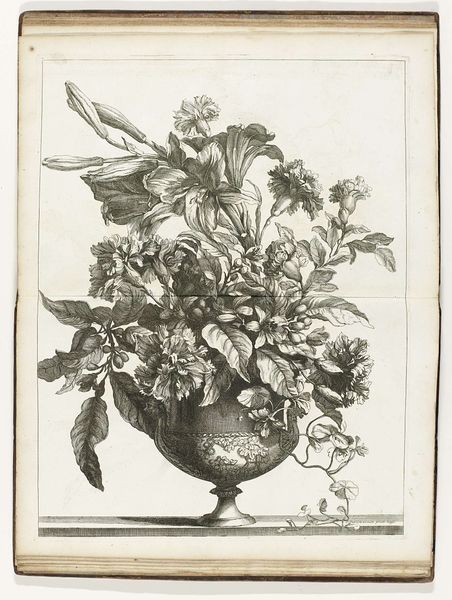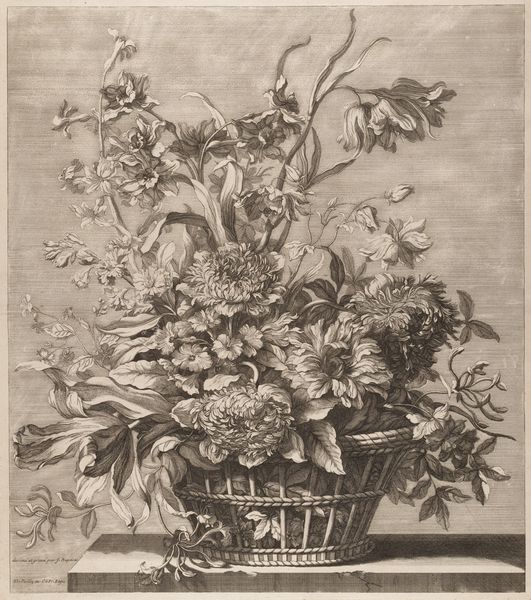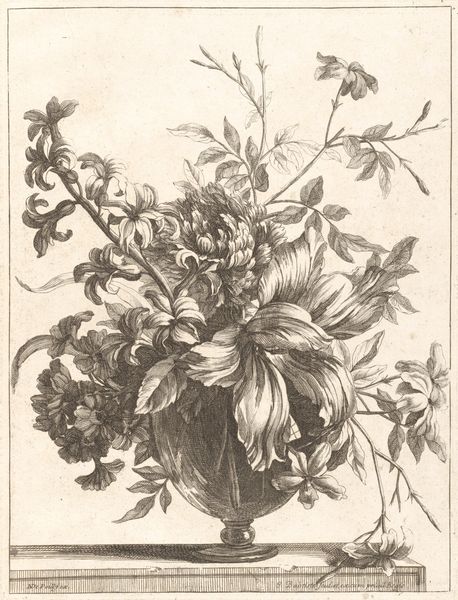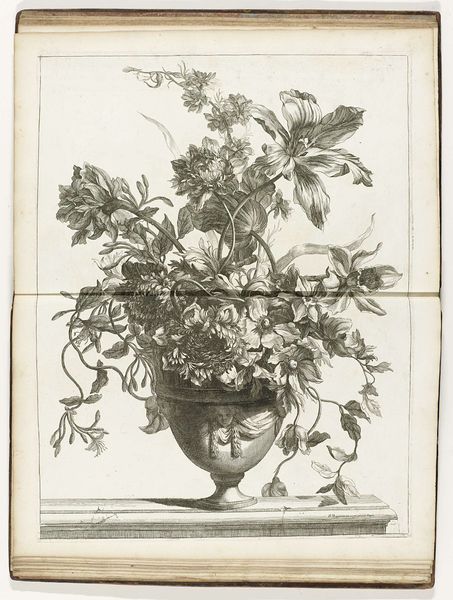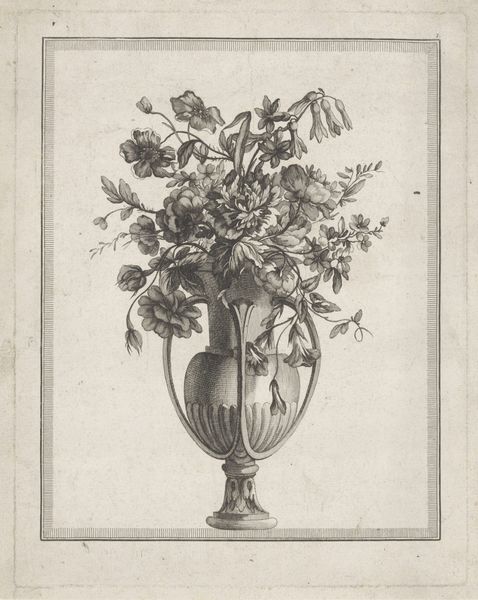
print, engraving
#
baroque
# print
#
engraving
Dimensions: height 244 mm, width 178 mm
Copyright: Rijks Museum: Open Domain
Curator: Pieter Schenk created this engraving, entitled "Glazen vaas met bloemen" or "Glass vase with flowers," around the 17th century. It’s currently housed here at the Rijksmuseum. Editor: My immediate impression is one of controlled exuberance. There's an intensity in the details, particularly given the limits of engraving. The bouquet practically spills out of its vase. Curator: Indeed, the technique of engraving lends itself well to capturing the textures of the various blossoms. Note the artist's expert use of hatching and cross-hatching to suggest depth and volume. It's quite evocative of the Baroque style. Editor: And, speaking of Baroque, one has to ask about the status of these flowers and the audience it played to in the 17th century. It’s hard to separate such lavish displays of nature from displays of wealth, especially as flower still lifes coincided with the tulip mania in the Netherlands. Curator: That's a fair point. There is definitely a display here, but also a keen eye for formal arrangement. Consider the way Schenk has structured the composition, guiding our eye through a carefully balanced asymmetry, that offers a complex and dynamic viewing experience. The ornate glass vase also mimics that dynamism. Editor: True. Even the shadow beneath the vase suggests an anchoring, albeit tenuous, in reality. Still, while the artwork demonstrates great technical prowess, for me, it also acts as an allegory. A potent reminder of fleeting beauty but also the privilege involved in capturing, possessing, and then picturing it. Curator: A compelling viewpoint. For me, focusing on the composition reminds me that these floral arrangements are beautiful exercises in balancing dynamism with geometric patterns. Editor: And yet, appreciating these artworks reminds us that nothing exists in a vacuum. Examining art objects from the past can provide illuminating insights when we embrace history, ethics, and intersectional politics.
Comments
No comments
Be the first to comment and join the conversation on the ultimate creative platform.
